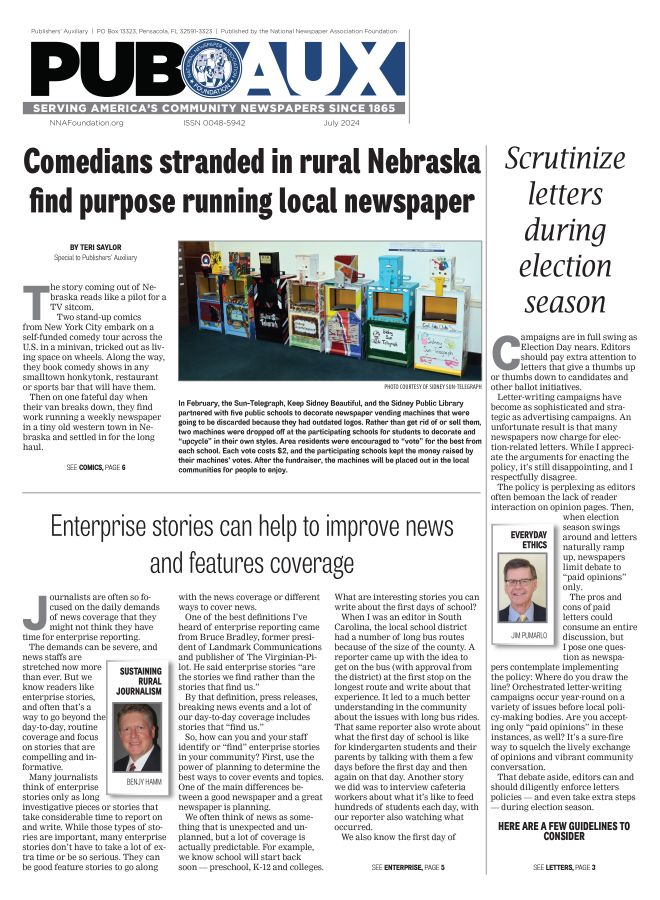Seeing the news — from every angle — is necessary to report it
Nov 6, 2014
By Gene Policinski
Inside the First Amendement
Things are not “looking up” when it comes to our ability to “look down” or just around to keep an eye on what our police and other authorities are doing.
In several high-profile incidents and elsewhere, police have moved to block the public from effectively seeing what they are doing at scenes. Those actions put First Amendment freedoms — speech, assembly, petition and free press — literally on the line.
Police stifled coverage by reporters and photographers in Ferguson Mo., and in New York City by blocking access on the ground, and by creating “no-fly zones” banning news helicopters from reporting on public demonstrations and altercations.
In some cases, authorities have cited safety concerns, but a report by The Associated Press recently cast doubt on the real reason for the no-coverage zone around Ferguson, Mo., last summer.
Make no mistake: While the issue is framed in terms of police and “news media,” the view being blocked is yours and mine and that of our fellow citizens. What is being excluded is the public’s right to know — and sometimes see first-hand — what their police are doing.
According to the AP, federal aviation officials agreed to a local police request for a “no media” zone of 37 square miles around Ferguson, Mo. for 12 days last August. AP uncovered audio tapes showing that the so-called “safety” zone was really intended to keep news helicopters away during a time of street protests.
While police denied that intent, AP’s report included audio segments that would appear to leave little doubt: “They finally admitted it really was to keep the media out,” said one FAA manager about the St. Louis County Police. “But they were a little concerned of, obviously, anything else that could be going on.” At another point, a manager at the FAA’s Kansas City center said that police “did not care if you ran commercial traffic through this TFR (temporary flight restriction) all day long. They didn’t want media in there.”
There’s history here: In 2011, New York City police banned news helicopters — as well as reporters on the ground — from the vicinity of a small park where the national “Occupy” movement had set up its headquarters. Authorities moved about 1 a.m. to clear the demonstrators. The few reporters on scene, as quickly as they could be identified, were escorted to locations blocks away.
Apart from running roughshod over our First Amendment rights, the news media bans are both ineffective and likely counter-productive. How many times do authorities have to see cell phone videos, often posted in near–real time before they accept that it’s no longer possible to stop such reports? Where is the realization that narrowly focused reports — with some, to be sure, motivated by advocacy rather that rooted in accuracy — often miss the “big picture” provided by journalists? And where police act properly, no-view often translates into misplaced suspicion.
Lest we think attempts to restrict news coverage are rare, one need only scan for the all-too regular incidents in which journalists and others are accosted and often taken into custody for simply taking photos of regular police activity happening out in the open. Go to the other end of the spectrum and consider the ongoing flap over the White House’s persistent attempts to exclude press photographers from events, with “official” photos offered as replacement.
The nation’s founders provided constitutional protection for a free press in large degree to provide an independent entity to observe and report on our public officials and the work that they do. You cannot be an effective “watchdog on government” if you’re kept penned in the official doghouse, or shut out of the public yard.
Disturbingly, the efforts at censorship occur even in the most benign circumstances. Reports say that two Lindenwood University student reporters were questioned for more than 90 minutes by more than a dozen St. Louis Metropolitan Police Department officers and detectives who saw the students filming department patrol cars from a public sidewalk. The department is investigating the incident, according to St. Louis Police Chief Sam Dotson, responding to a Nov. 1 letter from the university.
Perhaps that investigation should expand to include at least the Ferguson police officials behind the “no-fly” zone, and start with this question: When did the “Show Me” state motto get edited to include the words “ ... except for this or that!”?
Gene Policinski is chief operating officer of the Newseum Institute and senior vice president of the Institute’s First Amendment Center. He can be reached at gpolicinski@newseum.org.







